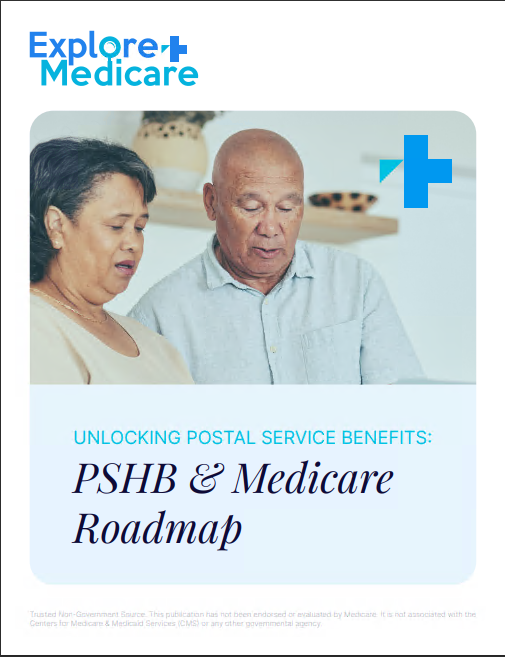Key Takeaways
-
Medicare can feel simple on paper but using it for real-world healthcare needs often reveals layers of complexity, especially when it comes to understanding coverage rules and billing practices.
-
Being proactive and informed about your rights, plan structure, and potential out-of-pocket costs can help you avoid unexpected charges and delays in care.
Medicare’s Promise vs. Reality
When you first become eligible for Medicare, it seems like everything should fall into place. You enroll during the right window, choose your parts, and expect things to run smoothly. But once you actually try to use Medicare—for a doctor’s visit, prescription refill, or medical procedure—the fine print starts to matter a lot more than you expected.
Medicare in 2025 covers millions of Americans. It’s structured to provide essential healthcare, but the way coverage works can be very situational. Unless you understand those nuances, you might find yourself confused at the pharmacy, surprised by a bill, or frustrated when coverage is denied for something you assumed was included.
How Medicare Is Structured
Understanding how Medicare is divided can help make things more manageable. Here’s a quick breakdown of its four parts:
-
Part A (Hospital Insurance): Covers inpatient hospital stays, care in skilled nursing facilities, hospice, and some home health care.
-
Part B (Medical Insurance): Includes doctor visits, outpatient care, medical supplies, and preventive services.
-
Part C (Medicare Advantage): Offered by private companies approved by Medicare. These plans combine Parts A and B and usually Part D.
-
Part D (Prescription Drug Coverage): Helps cover the cost of prescription drugs, including many recommended shots or vaccines.
Each part functions with its own rules, costs, and limitations. The confusion starts when you try to use them together—or misunderstand how they interact.
Enrollment Is Just the Beginning
Medicare enrollment often gives people a false sense of completion. You may assume that once you’re in, the coverage is fully operational. However, gaps in coverage, limitations on providers, and regional differences can impact how well Medicare meets your needs.
Here are a few things to keep in mind after enrollment:
-
Initial Enrollment Period (IEP): A seven-month window around your 65th birthday.
-
General Enrollment Period (GEP): From January 1 to March 31 each year if you missed IEP.
-
Annual Enrollment Period (AEP): October 15 to December 7 allows plan changes.
-
Special Enrollment Periods (SEPs): Triggered by life events like moving or losing employer coverage.
Missing deadlines or misunderstanding them can result in lifelong penalties or delays in coverage.
Using Your Medicare Coverage in Real Life
Once you’re enrolled, the reality of using Medicare can differ from expectations. Let’s look at a few situations where things can get tricky:
Coverage Isn’t Always Automatic
Just because a service is medically necessary doesn’t mean it’s automatically covered. For example, Medicare requires that certain treatments meet specific criteria before approving coverage. If paperwork is missing or not filed correctly by your provider, you may receive a denial.
Out-of-Pocket Surprises
In 2025, the Part A hospital deductible is $1,676 per benefit period. Part B has a standard annual deductible of $257. After you meet your deductible, you still pay 20% of the Medicare-approved amount for most services under Part B. For drug coverage, you now have a $2,000 cap on out-of-pocket expenses, but only after you reach certain thresholds.
Even with these guidelines, costs can vary widely depending on the service, provider, and region.
Networks and Restrictions
If you’re using a Medicare Advantage plan, you may be limited to specific provider networks. Seeking care outside your plan’s network can result in higher costs or even full denial of coverage. Always check whether your provider is in-network before scheduling services.
The Role of Prior Authorization
In recent years, Medicare has expanded the use of prior authorization, especially in Medicare Advantage plans. This process requires your doctor to get approval from your plan before a specific service will be covered.
Why it matters:
-
Delays in care can happen if authorizations are not processed quickly.
-
Denials may occur if documentation is insufficient.
-
You must stay informed to avoid scheduling procedures that won’t be reimbursed.
Always confirm whether prior authorization is required and follow up with both your provider and your plan to ensure it’s completed.
Coordination with Other Coverage
You might still have other health insurance when you start Medicare, such as:
-
Retiree health benefits
-
Employer-sponsored insurance (if you’re still working at 65)
-
TRICARE or VA benefits
Coordination of benefits determines which plan pays first. If Medicare is secondary and claims are submitted incorrectly, your bills may go unpaid or delayed. Keep a detailed record of your coverage hierarchy and make sure all providers have this information on file.
Prescription Drug Coverage Isn’t Always Seamless
Part D plans vary widely in which medications they cover and how much they cost. Formularies (lists of covered drugs) differ by plan, and each plan categorizes drugs into tiers with different copayment levels.
Things to be aware of:
-
Your medication may require prior authorization.
-
Quantity limits might apply.
-
Step therapy might require you to try a cheaper drug first.
Annual changes to formularies mean a drug covered this year might not be next year. The Annual Enrollment Period is your chance to reassess your plan and switch if needed.
Preventive Services Are Covered—But Timing and Billing Matter
Medicare covers many preventive services at no cost to you, such as:
-
Annual wellness visits
-
Screenings for cancer, diabetes, and heart disease
-
Vaccinations
But if your doctor performs additional services during the same visit, you might be billed. It’s important to clarify ahead of time what’s being done and how it’s being coded.
Appealing Denials and Understanding Your Rights
If Medicare denies coverage for something you believe should be covered, you have the right to appeal. The appeals process has multiple levels:
-
Redetermination by the Medicare Administrative Contractor (MAC)
-
Reconsideration by a Qualified Independent Contractor (QIC)
-
Hearing before an Administrative Law Judge (ALJ)
-
Review by the Medicare Appeals Council (MAC)
-
Judicial Review in Federal District Court
Start your appeal within 120 days of the denial notice. Keep all documents and request help if needed.
Common Misunderstandings That Lead to Trouble
Many Medicare users make assumptions that lead to surprises. Here are a few to watch out for:
-
Assuming every doctor accepts Medicare. Some opt out entirely.
-
Thinking all services are fully covered. Many require cost-sharing.
-
Believing Medicare works the same nationwide. Regional differences affect availability and coverage.
-
Not reviewing coverage annually. Plans change every year.
Proactive review and understanding can prevent costly errors.
Staying Ahead with Annual Reviews and Education
You should take time each fall to:
-
Review your Annual Notice of Change (ANOC)
-
Compare your current plan against new options
-
Check for changes in drug formularies, provider networks, or premiums
Also, make use of available educational resources, including Medicare’s official website, SHIP counselors, and licensed agents who can walk you through comparisons.
What to Keep in Mind Moving Forward
The structure of Medicare remains stable, but changes occur every year. In 2025, updates to out-of-pocket caps, prior authorization rules, and coordination requirements are already shaping how people interact with their plans. Whether you’re newly eligible or have been enrolled for years, being aware of evolving rules and cost structures matters.
You don’t have to figure it all out on your own. For peace of mind and clarity, speak with a licensed agent listed on this website who can provide professional advice tailored to your situation.









